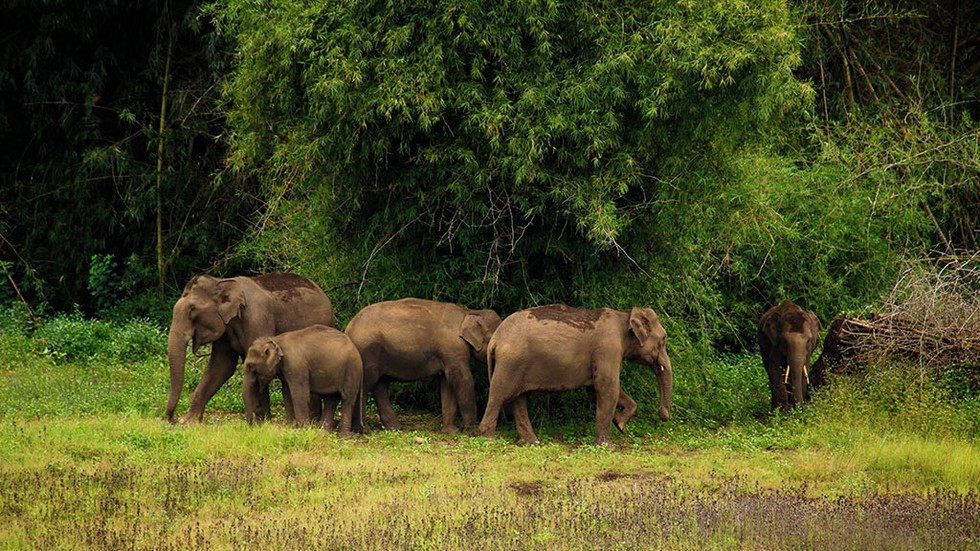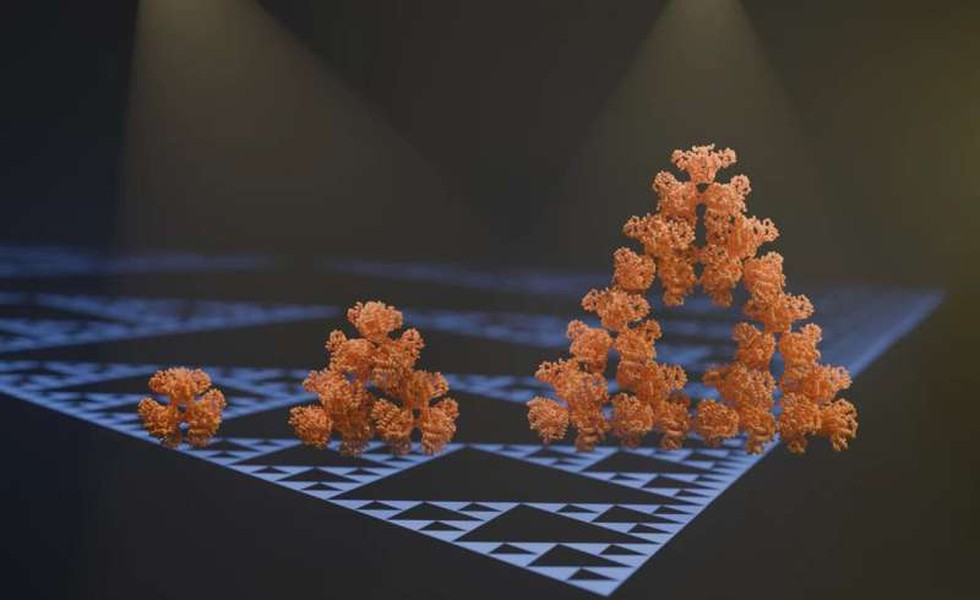
About Doctrine of Harmonious Construction:
- It is an essential rule for interpreting statutes. It states that when there’s a conflict between two or more statutes or between different parts or provisions of a statute, we should interpret them in a way that harmonises them.
- It means that when there are inconsistencies, we should try to reconcile the conflicting parts so that one part doesn’t negate the purpose of another.
- It is rooted in the fundamental legal principle that every statute is created with a specific purpose and intent. Therefore, it should be understood as a whole.
- But when two provisions are contradictory, it may not be possible to effectuate both of them, and as a result, one will be rendered futile as against the settled basic principle of ‘ut res magis valeat qauam pereat’ (that a thing is better understood so that it may have an effect than that it should be made void).
- Therefore, the court should interpret the laws in a way that removes the inconsistency and allows both provisions to remain in force, working together harmoniously.
- The goal is to give effect to all the provisions. To avoid conflicts, the interpretation of the statute should be consistent with all its parts.
- If it’s impossible to harmoniously interpret or reconcile the different parts or provisions, then it’s the responsibility of the judiciary to make the final decision.
- In the landmark case of Commissioner of Income Tax v. M/S Hindustan Bulk Carriers (2000), the Supreme Court established five fundamental principles governing the rule of harmonious construction:
- Courts should make every effort to avoid conflicts between seemingly conflicting provisions and should attempt to interpret these provisions in a way that harmonises them.
- A provision in one section of the law should not be used to nullify a provision found in another section unless the court is unable to find a way to reconcile their differences despite diligent effort.
- In cases where it’s impossible to completely reconcile inconsistencies between provisions, the courts must interpret them in a manner that gives effect to both provisions to the greatest extent possible.
- Courts must consider that an interpretation rendering one provision redundant or useless goes against the essence of harmonious construction and should be avoided.
- Harmonizing two contradictory provisions means preserving and not destroying any statutory provision or rendering it ineffective.
2. World Cybercrime Index

About World Cybercrime Index:
- It identifies the globe’s major cybercrime hotspots by ranking the most significant sources of cybercrime at a national level.
- It has been developed as a joint partnership between the University of Oxford and UNSW Canberra.
- The data that underpins the index was gathered through a survey of 92 leading cybercrime experts from around the world who are involved in cybercrime intelligence gathering and investigations.
- It ranks roughly 100 countries and identifies key hotspots according to various categories of cybercrime, including ransomware, credit card theft, and scams.
- Key Findings:
- Russia tops the list, followed by Ukraine, China, the USA, Nigeria and Romania.
- India captured the number 10 spot in the rankings.
- The researchers also found that certain kinds of cybercrime were associated with particular countries. For example, the United States was associated with data and identity theft, while those related to technical products or services seemed to often originate from China.
3. Adjudicating Authority under the Prevention of Money Laundering Act, 2002 (PMLA)

About Adjudicating Authority under the PMLA:
- Under PMLA, an adjudicating authority determines within 180 days whether the properties attached by the Enforcement Directorate (ED) are involved in money laundering or not.
- Functioning:
- It provides for the attachment of any property that is suspected to have been acquired with the proceeds of crime in a case of any offence that is listed in the schedule of the law.
- The attachment order is issued if the ED Director feels that “such proceeds of crime are likely to be concealed, transferred, or dealt with in any manner which may result in frustrating any proceedings relating to confiscation of such proceeds of crime”.
- This provisional attachment order is valid for a period of 180 days.
- It must be confirmed within this time by an adjudicating authority appointed by the central government, failing which the property is automatically released from attachment.
- Because the initial attachment is provisional, the accused can continue to enjoy the property until the adjudicating authority confirms the attachment, after which the ED has the power to claim possession.
- What happens after the Adjudicating Authority confirms the attachment?
- The accused has the right to challenge the adjudicating authority’s confirmation order at the PMLA’s Appellate Tribunal within 45 days.
- If the Appellate Tribunal too confirms the order, the accused can file a plea in the High Court, and so on. Unless the property is released along the way, it shall remain out of bounds for the owner until the trial is completed.
- Following final confirmation, in the case of a residential property, the ED will ask the owner to vacate the premises along with his belongings, and will take over possession.
- In case of a conviction, the trial court may order confiscation of the attached property, and vest the rights to the property with the central government.
- Attached properties may remain locked for years as the legal process continues, and may start to crumble and decay.
4. Wayanad Wildlife Sanctuary (WWS)

About Wayanad Wildlife Sanctuary (WWS):
- Location: It is located in Wayanad, Kerala, in the southern trenches of the Western Ghats. It is a part of the Nilgiri Biosphere Reserve, which is a UNESCO World Heritage Site.
- It is bordered by the protected areas of Nagarhole and Bandipur in Karnataka on the northeastern side and Mudumalai in Tamil Nadu on the southeastern side.
- Tribes living in these forests include some scheduled adivasis, such as Paniyas, Kattunaikkans, Kurumas, Ooralis, Adiyans, and Kurichiyas.
- Flora:
- It is a mosaic of the Western Ghats' significant vegetation types, ranging from moist deciduous to dry deciduous and semi-evergreen patches.
- Teak, rosewood, eucalyptus and silver oak plantations cover roughly one-third of the sanctuary.
- Marshy lands also mark their presence in the sanctuary.
- Fauna:
- It is also home to animals like elephants, panthers, tigers, jungle cats, civet cats, monkeys, wild dogs, bisons, deer and bears.
- It is known for having the largest population of tigers in Kerala.
5. What are Sungrazing Comets?

About Sungrazing Comets:
- Sungrazing comets are a special class of comets that come very close to the sun at their nearest approach, a point called perihelion.
- To be considered a sungrazer, a comet needs to get within about 850,000 miles from the sun at perihelion. Many come even closer, even to within a few thousand miles.
- Being so close to the sun is very hard on comets for many reasons.
- They are subjected to a lot of solar radiation, which boils off their water or other volatiles.
- The physical push of the radiation and the solar wind also helps form the tails.
- As they get closer to the sun, the comets experience extremely strong tidal forces or gravitational stress.
- In this hostile environment, many sungrazers do not survive their trip around the sun.
- Most usually evaporate in the hot solar atmosphere.
- Orbit: Most of the sungrazing comets observed follow a similar orbit, called the Kreutz Path, a single orbit that takes 800 years to complete. They collectively belong to a population called the Kreutz Group.
- These Kreutz comets are fragments of a single large comet that was shattered thousands of years ago. The far end of the Kreutz path lies 160 times farther from the sun than the orbit of Earth.
What is a Comet?
- Comets are frozen leftovers from the formation of the solar system, composed of dust, rock and ice.
- They orbit the sun in highly elliptical orbits that can take hundreds of thousands of years to complete.
- They range from a few miles to tens of miles wide, but as they orbit closer to the Sun, they heat up and spew gases and dust into a glowing head that can be larger than a planet.
- The dust and gases form a tail that stretches away from the Sun for millions of miles.
6. What are Fractals?

About Fractal:
- It is a never-ending pattern which is infinitely complex and self-similar across different scales. They are created by repeating a simple process over and over in an ongoing feedback loop.
- In essence, a fractal is a pattern that repeats forever, and every part of the fractal, regardless of how zoomed in or zoomed out you are, it looks very similar to the whole image.
- Fractals are distinct from the simple figures of classical, or Euclidean, geometry—the square, the circle, the sphere and so forth.
- Some of the more remarkable examples of such patterns include the design of human fingerprints, the stumps of trees, in the shells of snails, the system of human veins, the network of rivers as seen from high up, the splitting of veins in a plant leaf, the edges of a snowflake etc.
- They are capable of describing many irregularly shaped objects or spatially nonuniform phenomena in nature, such as coastlines and mountain ranges.
- Applications: Fractals are useful in modeling structures (such as eroded coastlines or snowflakes) in which similar patterns recur at progressively smaller scales and in describing partly random or chaotic phenomena such as crystal growth, fluid turbulence and galaxy formation.
Highlight of the research:
- They discovered a microbial enzyme—citrate synthase from a cyanobacterium—that spontaneously assembles into a pattern known as the Sierpinski triangle.
- Sierpiński triangle is an infinitely repeating series of triangles made up of smaller triangles.
7. Methanol

About Methanol:
- It appears as a colorless fairly volatile liquid with a faintly sweet pungent odor like that of ethyl alcohol. It is also known as also known as wood alcohol. It can completely mixes with water.
- Production: Preparing methanol is based on the direct combination of carbon monoxide gas and hydrogen in the presence of a catalyst. Increasingly, syngas, a mixture of hydrogen and carbon monoxide derived from biomass, is used for methanol production.
- Benefits:
- Lower production costs—Methanol is cheap to produce relative to other alternative fuels.
- Improved safety—Methanol has a lower risk of flammability compared to gasoline.
- Increased energy security—Methanol can be manufactured from a variety of domestic carbon-based feedstocks, such as biomass, natural gas and coal.
- Applications: Used to make chemicals, to remove water from automotive and aviation fuels, as a solvent for paints and plastics, and as an ingredient in a wide variety of products.
7. GPT-4 Vision

About GPT-4 Vision:
- It is also referred to as GPT-4V which allows users to instruct GPT-4 to analyse image inputs. It has been considered OpenAI’s step forward towards making its chatbot multimodal — an AI model with a combination of image, text and audio as inputs.
- It allows users to upload an image as input and ask a question about it. This task is known as visual question answering (VQA).
- It is a Large Multimodal Model or LMM, which is essentially a model that is capable of taking information in multiple modalities like text and images or text and audio and generating responses based on it.
- Features:
- It has capabilities such as processing visual content including photographs, screenshots, and documents. The latest iteration allows it to perform a slew of tasks such as identifying objects within images, and interpreting and analysing data displayed in graphs, charts, and other visualisations.
- It can also interpret handwritten and printed text contained within images. This is a significant leap in AI as it, in a way, bridges the gap between visual understanding and textual analysis.
- Potential Application fields:
- It can be a handy tool for researchers, web developers, data analysts and content creators. With its integration of advanced language modelling with visual capabilities, GPT-4 Vision can help in academic research, especially in interpreting historical documents and manuscripts.
- Developers can now write code for a website simply from a visual image of the design, which could even be a sketch. The model is capable of taking from a design on paper and creating code for a website.
- Data interpretation is another key area where the model can work wonders as the model lets one unlock insights based on visuals and graphics.
8. Mange Disease

About Mange Disease:
- It is a skin disease of animals caused by mite infestations, characterized by inflammation, itching, thickening of the skin and hair loss.
- The most severe form of mange is caused by varieties of the mite Sarcoptes scabiei, which also causes human scabies.
- Some form of mange is known in all domestic animals, although many varieties of mange mites infest only one species.
- Transmission: They are transmitted between animals by direct contact and by objects that have been in contact with infected animals. Most forms of mange are treatable.
Key facts about Asiatic wild dogs:
- It is a wild canid found in the forests of central, south and southeast Asia. They are also known as Indian wild dog, whistling dog, red wolf, red dog and mountain wolf.
- Distribution:
- They are found throughout Eastern and Southeastern Asia.
- They can be seen as far north as Siberia, as far south as some Malaysian islands, and as far west as the Indian peninsula.
- They are found in three clusters across India, namely the Western and Eastern Ghats, the central Indian landscape and North East India.
- Conservation status:
- IUCN Red List: Endangered
- The Wildlife Protection Act 1972: Schedule II
- CITES: Appendix II
9. Indian Pharmacopoeia Commission

About Indian Pharmacopoeia Commission:
- It is an autonomous Institution of the Ministry of Health and Family Welfare, Government of India. It is created to set standards of drugs in the country.
- Functions:
- Its basic function is to update regularly the standards of drugs commonly required for the treatment of diseases prevailing in this region.
- It publishes official documents for improving the Quality of Medicines by way of adding new and updating existing monographs in the form of Indian Pharmacopoeia (IP).
- It further promotes the rational use of generic medicines by publishing the National Formulary of India.
- It prescribes standards for identity, purity and strength of drugs essentially required from the health care perspective of human beings and animals.
- It also provides IP Reference Substances(IPRS) which act as a fingerprint for identification of an article under test and its purity as prescribed in IP.
What is fixed drug eruption?
- It is a distinctive variant of drug-induced dermatoses with characteristic recurrence at the same site of the skin or mucous membranes.
- It is known to occur more frequently with antimicrobials and nonsteroidal anti-inflammatory drugs than with other drugs.


























































































































































.png)
.png)
.png)
.png)
.png)


.png)
.png)
.png)





.png)
.png)






.png)
.png)
.png)
.png)
.png)
.png)
.png)
.png)
.png)

.png)







.png)
.png)


.png)
.png)
.png)


.png)

.png)
.png)





.jpg)

.png)
.png)


.png)

.png)
.png)
.png)

.jpg)

.jpg)


.png)

.png)
.png)
.png)
.png)
.png)
.png)
.png)
.png)
.png)
.png)




.png)

.png)





.png)
.png)
.png)
.png)
.png)
.png)
.png)
.png)
.png)
.png)
.jpg)
.jpg)

.png)
.png)
.png)
.png)
.png)
.png)
.png)
.png)
.png)
.png)
.png)
.png)
.png)
.png)
.png)
.png)
.png)
.png)
.png)
.png)
.png)
.png)



.png)
.png)

.jpg)
.jpg)


.jpg)
.jpg)
.jpg)
.jpg)
.jpg)

.jpg)








.jpg)
.jpg)
.jpg)
.jpg)
.jpg)

















.jpg)
.jpg)







.jpg)


















.jpg)
.jpg)






























































































.jpg)
.jpg)


























.jpg)

.jpg)










.jpg)








.jpg)




.jpg)










.jpg)


















.jpg)












































.jpg)














.jpg)
.jpg)
.jpg)





.jpg)

.jpg)
.jpg)





































































.jpg)


































.jpg)
.jpg)
















































.jpg)












.jpg)


.jpg)




.jpg)
.jpg)
.jpg)

.jpg)
.jpg)
.jpg)
.jpg)

.jpg)
.jpg)
.jpg)

.jpg)
.jpg)
.jpg)
.jpg)
.jpg)
.jpg)
.jpg)
.jpg)

.jpg)


.jpg)
.jpg)
.jpg)
.jpg)
.jpg)
.jpg)
.jpg)
.jpg)
.jpg)
.jpg)











.jpg)
.jpg)





.jpg)
.jpg)
.jpg)
























.jpg)
























.jpg)









.jpg)
.jpg)







.jpg)
.jpg)









































.jpg)
.jpg)
.jpg)
.jpg)
.jpg)

.jpg)
.jpg)
.jpg)
.jpg)
.jpg)


.jpg)
.jpg)
.jpg)
.jpg)
.jpg)

.jpg)
.jpg)
.jpg)
.jpg)
.jpg)
.jpg)
.jpg)
.jpg)
.jpg)
.jpg)
.png)

.png)
.png)

.png)
.png)
.png)
.png)


.jpg)
.jpg)

.jpg)
.jpg)
.jpg)

.png)
.png)
.png)
.png)
.png)
.png)
.png)

.png)
.png)
.png)
.png)
.png)
.png)
.png)
.png)
.png)
.png)





































































-min.png)



.png)




.png)








































